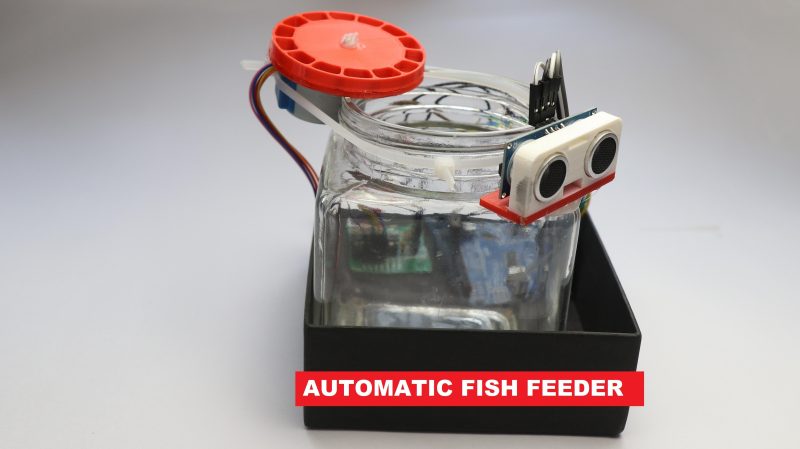Depending on the species, a fish can be a fairly low-maintenance pet. But of course even the most laid back of creatures needs to eat, so you’ll have to make sure to feed them regularly. If you’re a fish owner who would like to simplify tending to your creatures, you might find value in this project from [CrazyScience].
This fish feeder is based on an Arduino Uno, the 8-bit microcontroller development board which has done so much for so many. The Arduino drives a stepper motor, which rotates a 3D printed disc mechanism for dispensing food. Each slot of the disc is loaded with a small amount of fish food, so that when it rotates, a slot dumps its contents through a slot into the water.
Activating the system is as easy as a wave of the hand. That’s thanks to an ultrasonic sensor, which detects movement close by, and triggers the food delivery mechanism in turn. We’d love to see this upgraded with a timer mode too, though it would require the addition of a real-time clock module to the humble Arduino Uno.
It’s a simple project, but one that teaches all kinds of useful skills, from programming to design and 3D printing. We just worry that the fish bowl in the demo is a far too small for fish to remain healthy. We’ve seen some other similar projects before, too.

















Building a timer into a stock UNO is easy to do and the food could be dispensed on a regular basis
Arduino IDE hardware platform adopter increases?
https://www.amazon.com/gp/product/B07QCP2451/ref=ppx_yo_dt_b_asin_title_o00_s00?ie=UTF8&th=1
That’s more effort to trigger this than tapping a key switch! If you used a ratchet and pawl matching the number of slots, you definitely could have used a 555. We will all assume this is a breeder “tank”?
I did try to make something similar ten years ago, but got stuck when put into the real environment, the food fish would clump up because of the high humidity environment and block the mechanism.
I looked briefly how to fix the issue, but then got sidetracked by other projects.
These are fun projects – I built one as well: https://www.hotelexistence.ca/fish-feeder-project-part-2-completed/
I got it to working, but not flawlessly. I used a DC motor and an optical sensor to detect the position of the feeding disc.
It was always more practical to have friends come by and feed the fish while we were away.
With automatic fish feeders, one of the most important points is moisture/humidity control to keep the food fresh and free from clumping. This design doesn’t address that—the little bins are completely unprotected. And who would be cruel enough to put their fish in that tiny jar that doesn’t have even a minimal aerator? As a fish lover who keeps many of the adorable critters, I cringe when I see something like this.
IMHO the motion sensor should not trigger feeding. Feeding should be automatic after nn hours of no activity so the fish get food if I’m not at home…